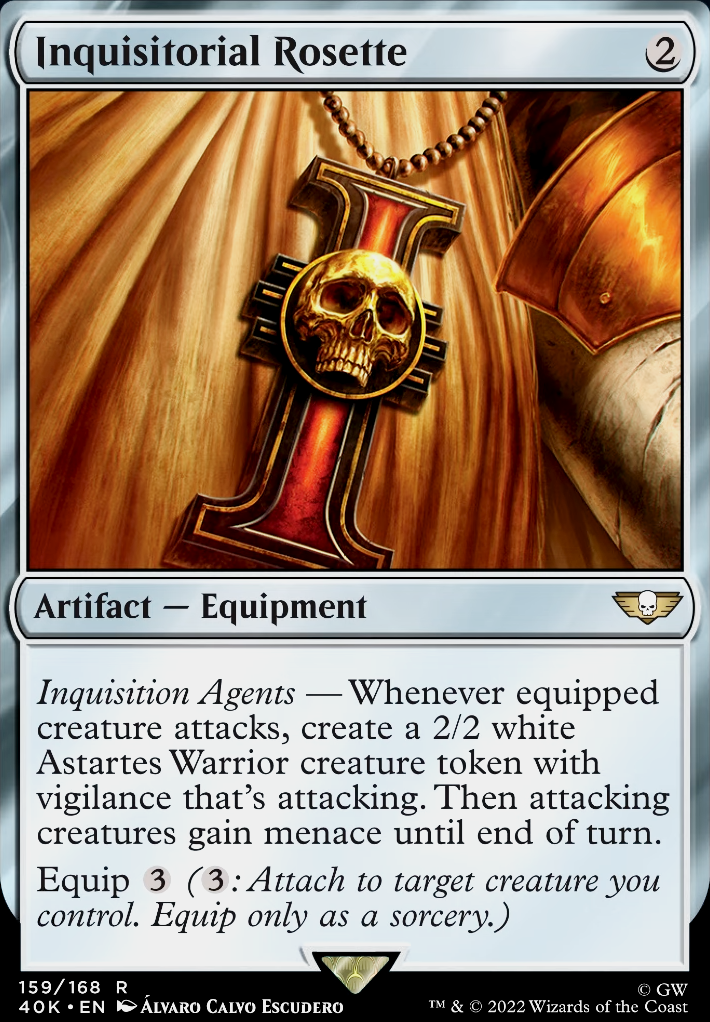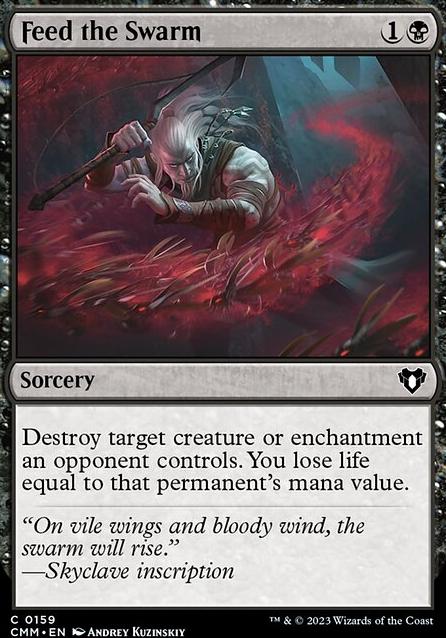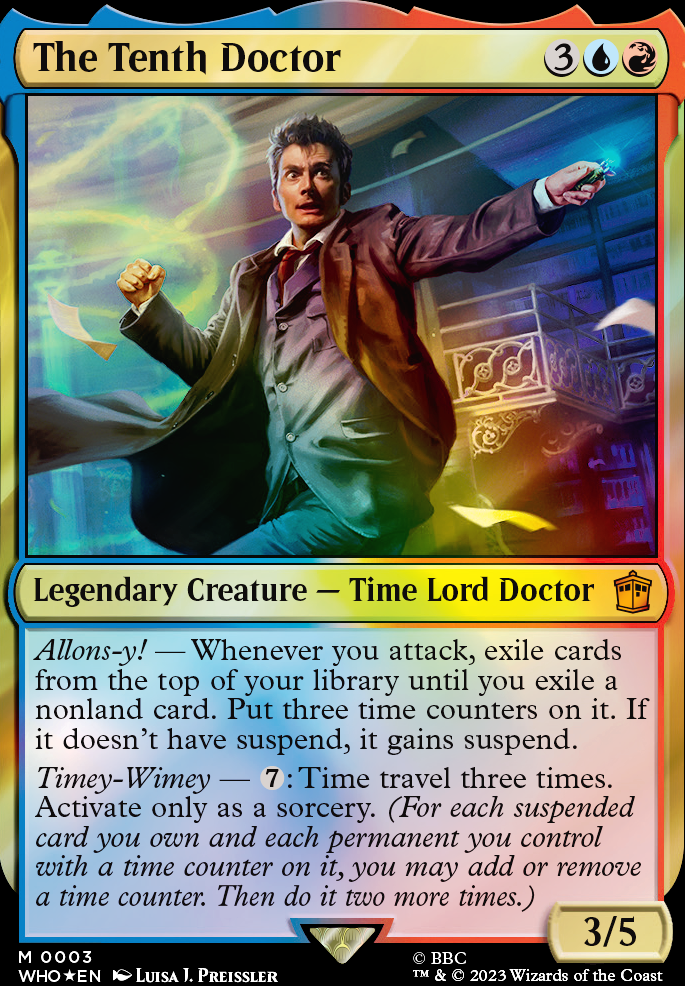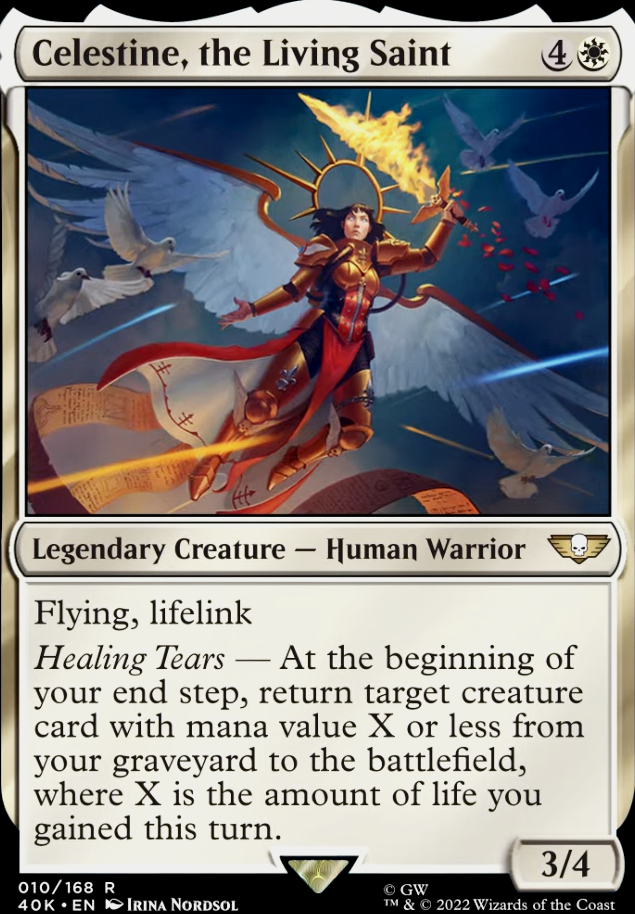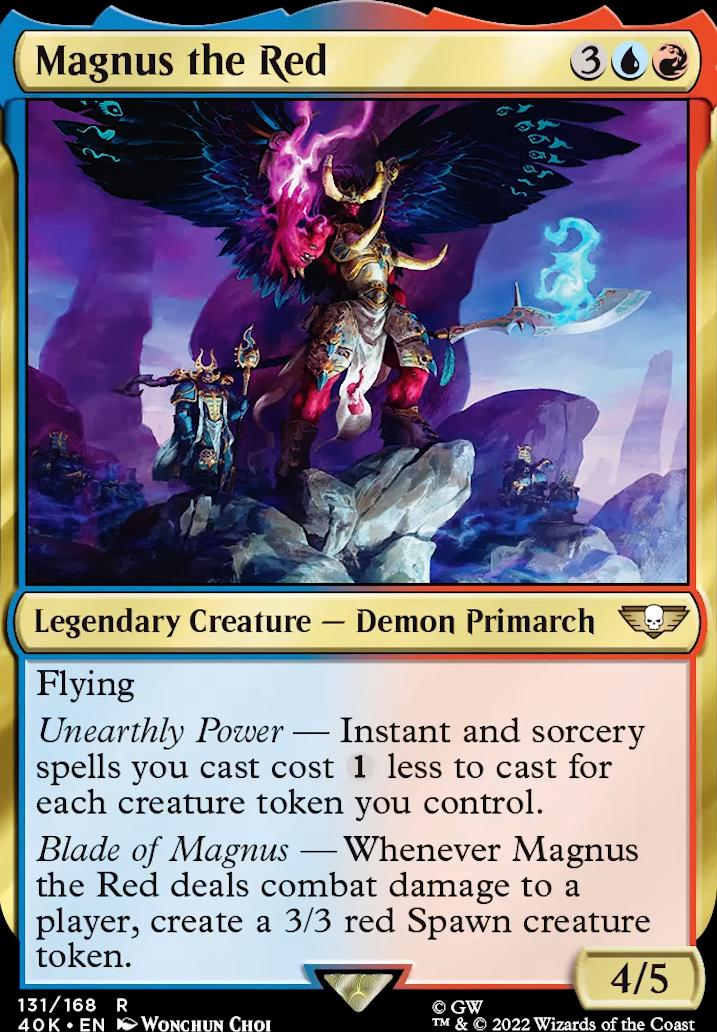
In Possession of a Singular Force of Will
Commander / EDH Investigate Primer Sacrifice Theme/Gimmick Tokens UB (Dimir)
Instant (26)
- 1x Aphotic Wisps
- 1x Arcane Denial
-
1x
Archmage's Charm

- 1x Blink of an Eye
- 1x Brainstorm
- 1x Consider
- 1x Cryptic Command
- 1x Curate
- 1x Cyclonic Rift
- 1x Deadly Rollick
- 1x Deliberate
- 1x Fierce Guardianship
- 1x Force of Negation
- 1x Force of Will
- 1x Hagra Mauling Flip
- 1x Into the Roil
- 1x Jwari Disruption Flip
- 1x Leap
- 1x Malakir Rebirth Flip
- 1x Mystic Confluence
- 1x Opt
- 1x Resculpt
- 1x Shadow Rift
- 1x Silundi Vision Flip
- 1x Vampiric Tutor
- 1x Whir of Invention
Sorcery (7)
- 1x Agadeem's Awakening Flip
- 1x Damnation
- 1x Demonic Tutor
- 1x Feed the Swarm
- 1x Rise and Shine
- 1x Sea Gate Restoration Flip
- 1x Toxic Deluge
Planeswalker (3)
Land (27)
- 1x Bojuka Bog
- 1x Choked Estuary
- 1x Clearwater Pathway Flip
- 1x Command Tower
- 1x Darksteel Citadel
- 1x Darkwater Catacombs
- 1x Drowned Catacomb
- 1x Inventors' Fair
- 6x Island
- 1x Mistvault Bridge
- 1x Morphic Pool
- 1x Otawara, Soaring City
- 1x Reliquary Tower
- 1x Rogue's Passage
- 1x Seat of the Synod
- 1x Shizo, Death's Storehouse
- 1x Sunken Hollow
- 2x Swamp
- 1x Urza's Saga
- 1x Vault of Whispers
- 1x Watery Grave
Creature (13)
- 1x Academy Manufactor
- 1x Braids, Arisen Nightmare
- 1x Consecrated Sphinx
- 1x Cyberdrive Awakener
- 1x Eloise, Nephalia Sleuth
-
1x
God-Eternal Kefnet

- 1x Jon Irenicus, Shattered One
- 1x Kuldotha Forgemaster
- 1x Marionette Master
- 1x Notion Thief
- 1x Sakashima of a Thousand Faces
- 1x Urza, Lord High Artificer
- 1x Whirler Rogue
Commander (1)
Artifact (18)
- 1x Arcane Signet
- 1x Blackblade Reforged
- 1x Cranial Plating
- 1x Dimir Signet
- 1x Fellwar Stone
- 1x Five Hundred Year Diary
-
1x
Inquisitorial Rosette

- 1x Inspiring Statuary
- 1x Lightning Greaves
- 1x Mirror Box
- 1x Nettlecyst
- 1x Sensei's Divining Top
- 1x Sol Ring
- 1x Swiftfoot Boots
- 1x Talisman of Dominance
- 1x Tamiyo's Journal
- 1x The Golden Throne
- 1x Time Sieve
Enchantment (5)
Maybeboard
Artifact (21)
- 1x Ashnod's Altar
-
1x
Bolas's Citadel

- 1x Commander's Plate
- 1x Everflowing Chalice
- 1x Five Hundred Year Diary
- 1x Glamdring
-
1x
Isochron Scepter

- 1x Krark-Clan Ironworks
- 1x Mana Crypt
- 1x Manifold Key
- 1x Mind Stone
- 1x Mirror Gallery
- 1x Phyrexian Altar
- 1x Reaver Titan
- 1x Runechanter's Pike
- 1x Scroll Rack
- 1x Skullclamp
- 1x Thought Vessel
- 1x Victory Chimes
- 1x Whispersilk Cloak
- 1x Wizard's Spellbook
Land (2)
Instant (18)
- 1x An Offer You Can't Refuse
- 1x Bane's Contingency
- 1x Dark Ritual
- 1x Deadly Dispute
- 1x Decoy Gambit
- 1x Drown in the Loch
- 1x Frantic Search
- 1x Go for the Throat
- 1x Mission Briefing
- 1x Nurgle's Conscription
- 1x Reality Shift
- 1x Repeal
- 1x Sapphire Charm
- 1x Stinging Study
- 1x Swan Song
- 1x Tainted Strike
- 1x Vampiric Tutor
- 1x You Come to a River
Enchantment (8)
Creature (12)
- 1x Archmage Emeritus
- 1x Ayara, First of Locthwain
- 1x Cybernetica Datasmith
- 1x Ethereal Investigator
- 1x Junk Winder
- 1x Martha Jones
- 1x Morbid Opportunist
- 1x Nadier's Nightblade
- 1x Octavia, Living Thesis
- 1x Pitiless Plunderer
- 1x Talrand, Sky Summoner
- 1x The Master, Mesmerist
Sorcery (11)
Suggestions
Updates Add
Comments
Attention! Complete Comment Tutorial! This annoying message will go away once you do!
Important! Formatting tips — Comment Tutorial — markdown syntax
Please login to comment
99% Casual
Competitive
| Top Ranked |
|
| Date added | 1 year |
| Last updated | 6 months |
| Legality | This deck is Commander / EDH legal. |
| Rarity (main - side) | 14 - 0 Mythic Rares 46 - 0 Rares 13 - 0 Uncommons 19 - 0 Commons |
| Cards | 100 |
| Avg. CMC | 2.95 |
| Tokens | Astartes Warrior 2/2 W, Cherubael 4/4 B, Clue, Construct 0/0 C, Copy Clone, Elemental 4/4 UR, Emblem Tezzeret, Betrayer of Flesh, Food, Phyrexian Germ 0/0 B, Servo 1/1 C, Thopter 1/1 C, Treasure |
| Folders | EDH, gumby, blue black inquisitor, WH40k, Decks with great themes, Good deck |
| Votes | |
| Ignored suggestions | |
| Shared with | |
| Views |
